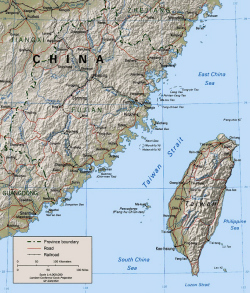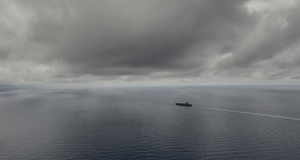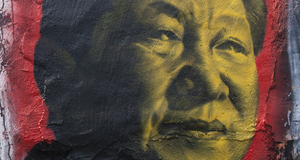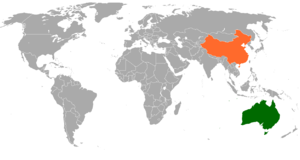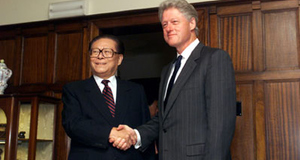Featured Article:The Taiwan Strait: From Civil War to Status Quo
By
2010, Vol. 2 No. 06 | pg. 1/3 | » In 2005, during a period of heightened tensions between China and Taiwan and with the United States deeply embroiled in two major wars in Iraq and Afghanistan, the leading authority on East Asian security within the National Security Council nevertheless made the point that “one of the greatest dangers to international security” was the “possibility of a military confrontation between China and Taiwan that leads to a war between China and the United States” (Lieberthal, 2005). Analysts and media pundits have often alluded to this doomsday scenario in which Taiwan becomes a catalyst for a major international war; as recently as January 2010, an article in the New York Times referred to Taiwan as “the most sensitive diplomatic issue” between China and the United States (Cooper). On the other hand, as economic, cultural, and political ties between China, Taiwan, and the U.S. have grown deeper, especially in the last decade, it becomes apparent that a military conflict would carry with it significant downsides, not least of which would be a disruption of trade between two of the world’s three biggest economies. The international relations theory of ‘complex interdependence’ suggests that as this trend of increasing exchange continues, the likelihood of confrontation should decrease. In consideration of this hypothesis, this paper addresses one main question: Today, how relevant is the threat presented by the situation in the Taiwan Strait? In addressing this question, this paper will consider destabilizing factors—such as the prevalence of Chinese nationalism, its role in the development of the Chinese state, and its influence on the Chinese political apparatus—and factors such as increasing economic ties that are acting to stabilize the relationship between China, Taiwan, and the United States. These factors will then be viewed through two competing theories of international relations. I. Putting Taiwan in ContextThe relationship between mainland China, the island province of Taiwan, and the United States is the product of a long and tumultuous history. In the 20th century alone, there has been civil war, revolution, and international war that has often pitched these players against one another, yet at times also brought them together. These historical events are vital to understanding the tensions and attitudes that permeate contemporary cross-strait relations. The Chinese Mainland and the Island of Taiwan: An OverviewRelations between mainland China and Taiwan have a particularly conflicted past. Though for centuries Taiwan was loosely integrated into the Chinese Empire (Shepherd, 2007: 108), mainland China has not exercised full control over Taiwan since 1895, when the island was ceded to Japan after a Chinese military defeat (Roberts, 1999: 192). Taiwan bore the chains of Japanese colonialism through 1945, after which point it was once again relinquished to China; overall, Taiwan has remained the subject of “foreign threat or outside domination” since the Opium Wars of the mid-19th century (Lamley, 2007: 202). Nevertheless, Taiwan retained some degree of autonomy from the mainland. After 1945, Chiang Kai-Shek’s Nationalist Party (KMT)—then still the party in power, under the banner of the Republic of China (ROC)—took control from the Japanese and “attempted to solidify their control over the island” (Phillips, 2007: 276). It is important to draw distinction between the local Taiwanese population and the Nationalist government, which at the time was dominated by mainlanders and viewed by the local population as another invading force (Rubinstein, xiv). As Phillips writes, “Reintegration [with the Chinese state] became, to many, recolonization,” and the process itself was accompanied by “massacring thousands of the island’s inhabitants” (Phillips, 2007: 277). The result was a tense relationship between the government and the population, which at times led to further violent clashes (with most of the violence being committed against the local population. This, along with other factors, later helped fuel mainland rhetoric insisting on the “liberation” of Taiwan. Meanwhile, Mao Zedong and the Chinese Communist Party (CCP) were waging a Civil War with Chiang’s regime. When Mao ultimately won the war and control of mainland China in 1949, establishing the People’s Republic of China (PRC), Chiang’s Nationalist forces fled to Taiwan while maintaining the banner of the ROC. After retreating to Taiwan, Chiang sought to revitalize his party and insure its dominance over Taiwan by establishing a state of martial law. Under this system, which stayed in place until the 1980s, “the people could not form any new political parties or publish any new newspapers,” while the government security forces became “notorious for [their] motley character and abuse of privilege” (Wang, 2007: 323). Furthermore, in the early stages of ROC control throughout the 1950s, “Taiwan was isolated more completely from the mainland than at any time under Japanese rule” (Phillips, 2007: 277). Isolated as it was from the mainland, Taiwan’s relationship with the United States flourished in this period and became the primary wedge between the U.S. and China, generating great discontent both within the Chinese leadership and its population. International Developments and the Taiwan Relations ActIn the international arena, the ROC after losing the Civil War continued to claim itself as the legitimate government of China, including that of the vast mainland; in fact, Chiang’s regime—restricted to the small island—occupied the Chinese seat in the United Nations, and a powerful seat on the UN Security Council, until 1971, despite representing only a tiny fraction of the actual Chinese population (Rubinstein, 2007: 438). Even after the PRC assumed its rightful seat in the UN, many countries, including the U.S., continued to maintain official diplomatic ties with Taiwan. Most countries economic ties with the island also remained largely independent of the mainland. The PRC in Beijing, on the other hand, has always denied Taiwan’s claim to independence or legitimate authority over the mainland. Under their “One-China” policy, the mainland has always asserted that Taiwan is a province of China (Roberts, 1999: 286). Today, China will only establish or maintain diplomatic relations with countries that “recognize the government of the PRC as the sole legitimate government representing the whole of China, [and] sever or refrain from establishing diplomatic relations with the Taiwan authorities” (“White-Paper: The One-China Principle and the Taiwan Issue,” n.d.). Nevertheless, the status of Taiwan has been an ongoing challenge for both parties, as the ROC has, in a sort of ebb and flow, pushed for increased autonomy while the government in Beijing has sought tighter controls and eventual full unification with the mainland. The result is often referred to as the status quo: a stalemate situation in which neither side presses too hard for immediate changes (Clark, 2007: 498; Cody, 2006). The United States has of course been an important player in this relationship, having been an early supporter of the ROC during the Chinese Civil War and, in 1954, solidifying its support for the island by entering into the Taiwan-U.S. Mutual Defense Treaty (Wang, 2007: 326). This treaty was replaced with the Taiwan Relations Act (TRA) in 1979 when the U.S. and the PRC first established diplomatic relations. The TRA created a private corporation called the American Institute in Taiwan to act as a “pseudo-embassy” (Copper, 2005: 79) and maintain de facto diplomatic relations between the U.S. and Taiwan; in essence, the agreement assigns the island most of the political trappings of a sovereign state, while skirting the legal pitfalls of the One-China Policy (Rubinstein, 2007: 465). The very existence of this agreement, and the resulting relationship between Washington and Taipei, understandably remains a major point of contention in today’s U.S.-China relationship. Within the TRA, the U.S. adopted a number of important policy positions regarding Taiwan, including the following critical statements found in Section 2 (b): The Taiwan Relations ActSection 2.
(“Taiwan Relations Act,” 1979) The agreement clearly spells out strong support for Taiwan and, indeed for the mainland, can be viewed as a breach of the PRC’s territorial sovereignty. In particular, the U.S. policy of providing “arms of a defensive character” incites significant anger on the mainland. Nevertheless, it is a relatively widespread misperception that the U.S. is in some way automatically bound to come to the aid of Taiwan if an attempt to forcibly reintegrate the island were made by China. While the agreement defines a strong framework of support for Taiwan, “nothing in the TRA specifically obligates the United States… to resort to military conflict on Taiwan’s behalf” (Dumbaugh, 2009: 4). It is in this context—as both a wedge and an extension of U.S. influence in the region—that Taiwan has come to exist as a highly important variable in U.S.-Chinese relations. Previous Conflicts in the Taiwan Strait: The Taiwan Strait CrisesIn the period since 1949, there have been three physical confrontations between China and Taiwan known cumulatively as the Taiwan Strait Crises. The first two instances of military conflict occurred shortly after the establishment of the PRC, in 1954-55 and 1958, respectively; the most recent crisis occurred from 1995-1996. (Clark, 2007: 516). The First Taiwan Strait Crisis lasted approximately nine months from 1954-55, and in fact was a significant event in the U.S.-Taiwan-China relationship. Chiang’s ROC government positioned as many as 80,000 troops on the small islands of Matsu and Quemoy, only about 10 kilometers from the mainland, and the PRC responded, against U.S. warnings, with artillery bombardments of ROC positions. The most important development of the First Taiwan Strait Crisis was the signing of the Taiwan-U.S. Mutual Defense Treaty (which remained in effect until 1979), and the fact that through strong rhetoric, “the United States had indicated that it was willing to use tactical nuclear weapons in defense of the island” (“First Taiwan Strait Crisis,” n.d.). After the 1954-55 crisis ended when China abandoned its assault on Quemoy and Matsu, the U.S. set out arming Chiang’s Nationalist forces with an array of powerful missiles. This of course raised tensions, but physical confrontation actually broke out in the context of Mao’s Great Leap Forward and an increasingly hard-line stance on foreign policy issues (“Second Taiwan Strait Crisis,” n.d.). The PRC once again began artillery assaults on ROC positions in Quemoy and Matsu in August 1958 in conjunction with a “declaration that China intended to ‘liberate’ Taiwan” (Roberts, 1999: 269). In response, the U.S. sent a large fleet of naval vessels, along with other military support including air support, to patrol the Strait. At this point, the conflict began to acquire Cold War overtones, with the Soviet Union stating, “an American attack on China would be viewed as an attack on the USSR,” while the U.S. boldly declared that they would not retreat “in the face of armed aggression” (“Second Taiwan Strait Crisis,” n.d.). During the conflict, the U.S. created plans for nuclear strikes on major Chinese cities which would likely have had a death toll in excess of a million lives (“Second Taiwan Strait Crisis,” n.d.). This apparent willingness of the U.S. to go to war over Taiwan ultimately caused China to back down, and led to two key messages:
In many ways, it can be said that during the Second Taiwan Strait Crisis the PRC was testing the strength of its relationship with the USSR; in actuality, it turned out the USSR was not eager to risk a confrontation with the United States over China’s ambitions in Taiwan. However, the conflict remained unresolved. The most recent Taiwan Strait Crisis came after a long period of stalemate, lasting from 1958 until 1995. The return to conflict was the result of a confluence of factors that had been building up in the early 1990s. Clark writes, “Taiwan became increasingly worried that China was successfully limiting pragmatic diplomacy1 and making the island dependent on the mainland, while China worried that Taiwan was on the verge of establishing Taiwan Independence” (Clark, 2007: 522). Leaders of both countries were additionally under domestic pressure to take a more direct stance toward the issue. The population on the mainland “saw Taiwan as representing the last major symbol of national humiliation from the nineteenth century,” and in Taiwan, “the general population became increasingly restive over their lack of diplomatic status” (Clark, 2007: 522). As a result of these pressures, the PRC announced a series of missile tests and naval exercises a short distance from the Taiwanese coast in July 1995; additional missile tests were conducted through March 1996 in the lead up to Taiwan’s first direct elections: “These tests, and the military exercises that preceded them [in 1995], were clearly meant to intimidate the people of Taiwan in the run-up to the presidential election” (“Taiwan Strait,” n.d.), though they ultimately had the opposite effect. The United States, in response to newfound Chinese aggression, sent ships to Taiwan’s coast in a show of strength and support. The missile tests ultimately ended as planned, days before Taiwan’s election, with no actual military confrontation. However, the incident marked the start of a period of increasing tensions between China and Taiwan that would last nearly a decade.Continued on Next Page » Suggested Reading from Inquiries Journal
Inquiries Journal provides undergraduate and graduate students around the world a platform for the wide dissemination of academic work over a range of core disciplines. Representing the work of students from hundreds of institutions around the globe, Inquiries Journal's large database of academic articles is completely free. Learn more | Blog | Submit Latest in International Affairs |

